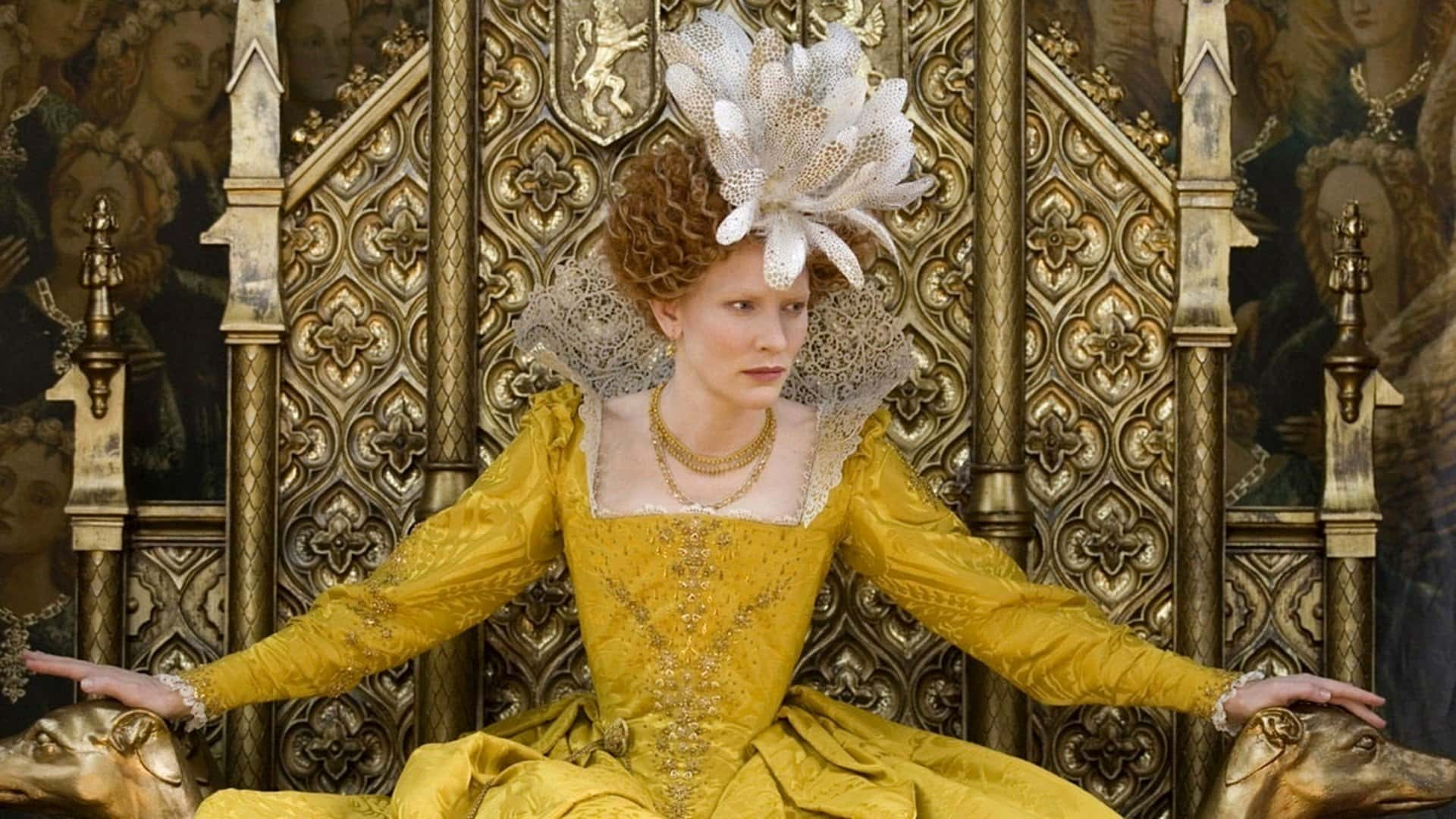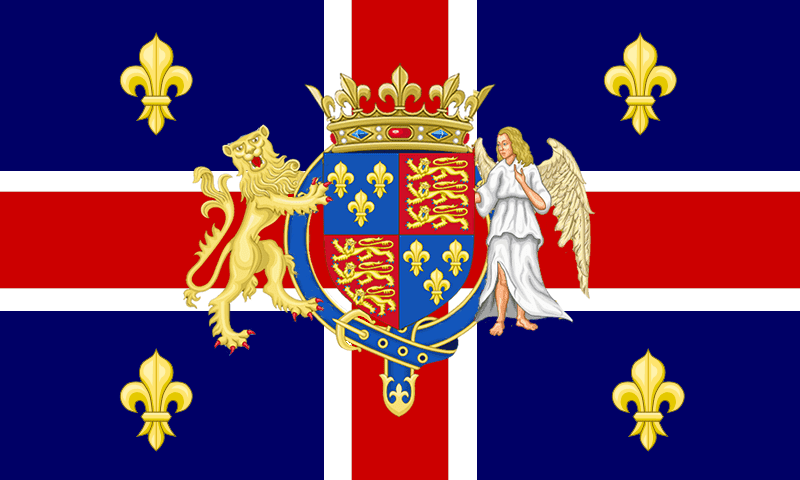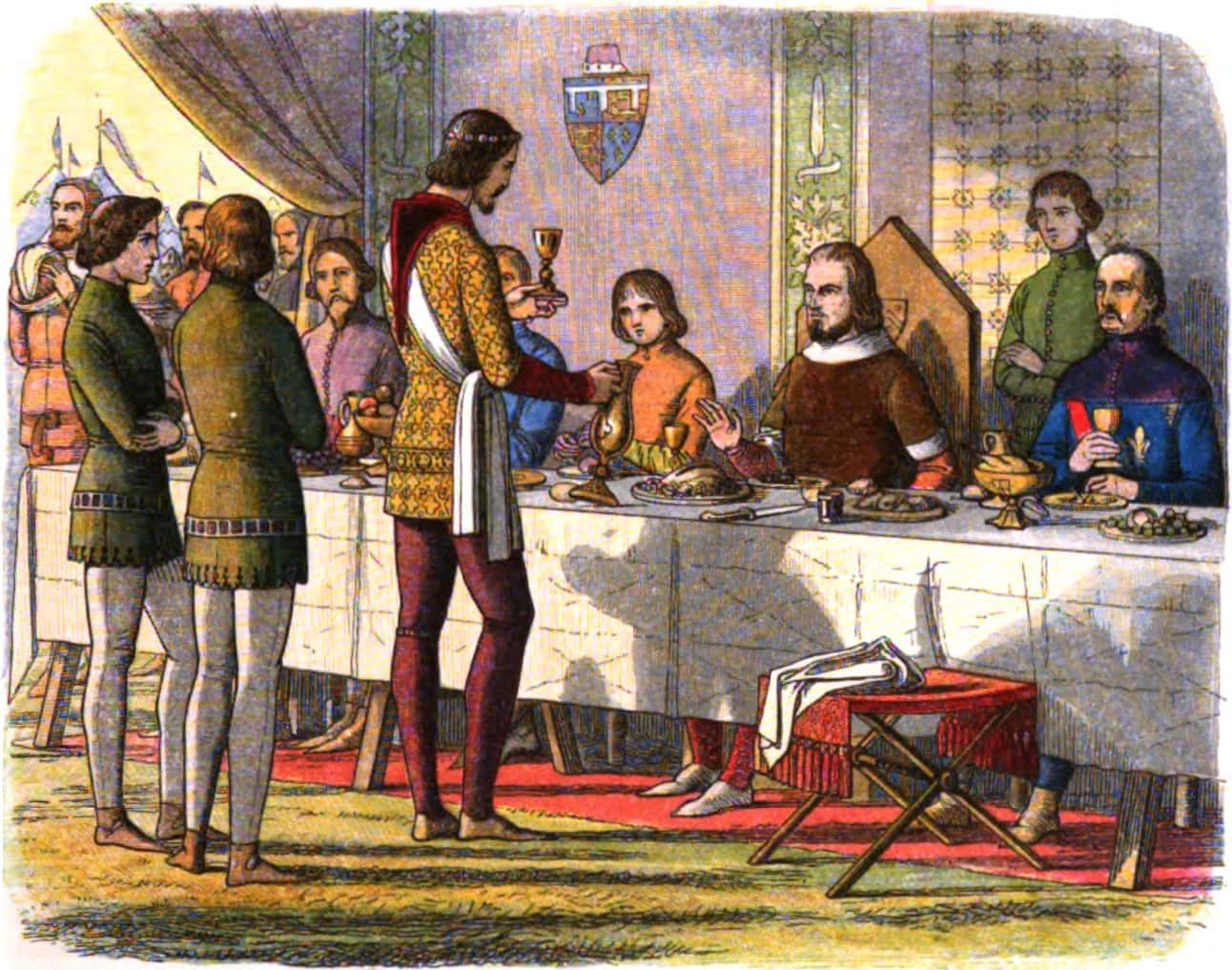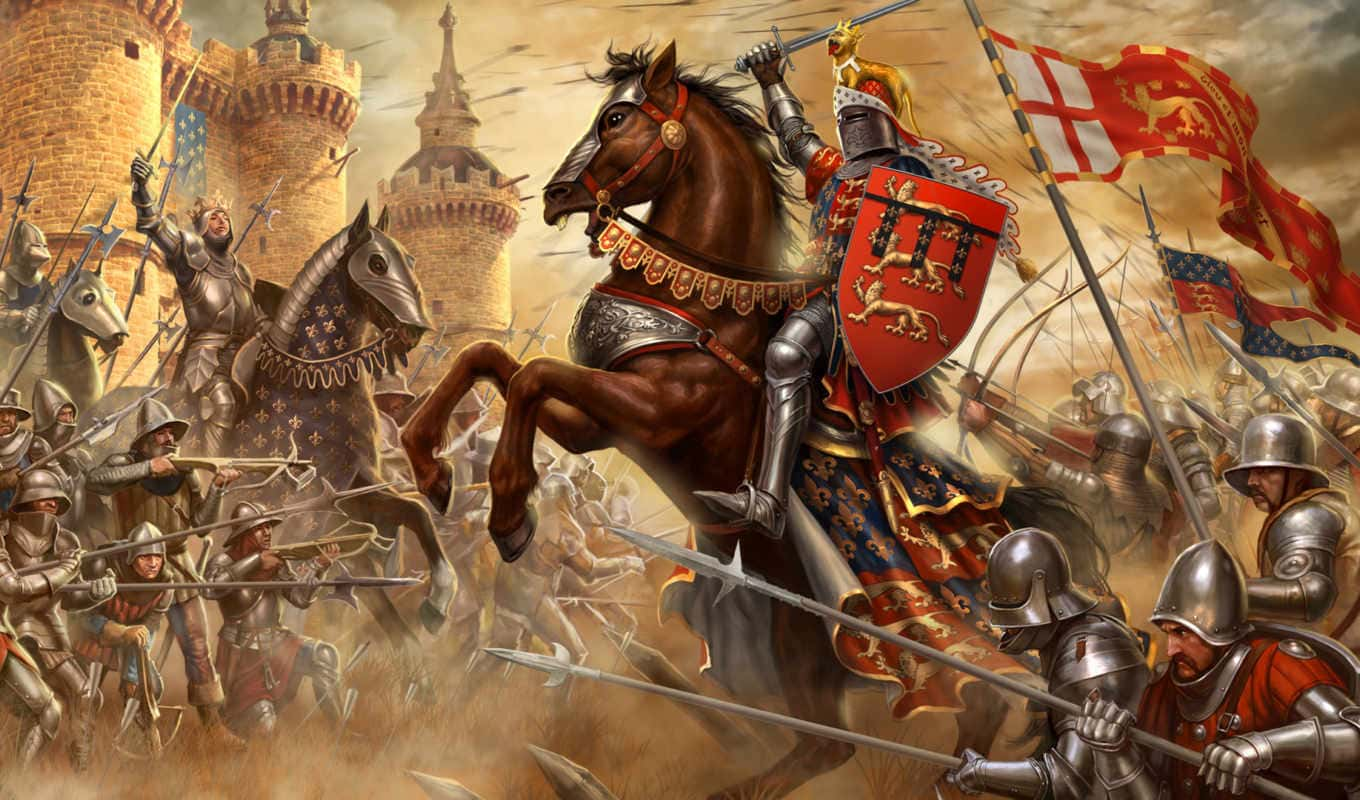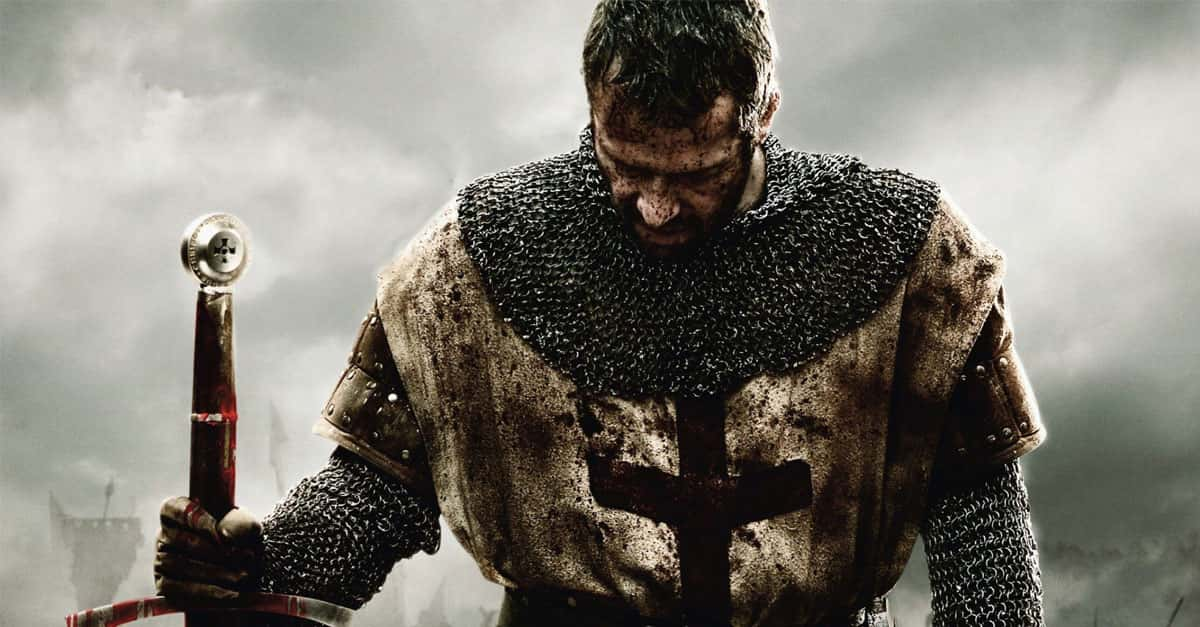Fighting a war for a century takes serious commitment on both sides. So, what inspired this long and destructive war, and what ultimately came out of it? These 44 facts will help answer those questions.
The Hundred Years' War Facts
44. What do They Keep on Fighting For?
The Hundred Years’ War was fought for no less than the throne of France, which was the most powerful kingdom in Europe at the time. Both the English and French kings claimed to be King of France. In fact, the English would maintain that their kings were also kings of France in all but name right up to Queen Elizabeth I.
43. Who’s Fighting Who?
Alliances changed over the course of the war, but the most consistent battle lines were drawn between the English and the French. The English could rely on the Welsh, the Burgundians, and the Portuguese, while the French made allies out of the Scots, the Genoese, and the Bohemians—they sadly left their Rhapsody at home during the war.
42. Who’s the King Around Here?
When Charles IV of France died in 1328, he had no sons to succeed him. His most direct relative was the King of England, Edward III, through Edward’s mother, Isabella, who was also Charles’ sister. The French, however, said that a woman couldn’t inherit the throne, and so Charles’s cousin, Philip, took the throne instead. This eventually led to war.
Edward III and Phillip VI
41. It Lasted How Long?!
Despite being called the Hundred Years’ War, the conflict wasn’t continuous. It was broken up by several truces and ceasefires. Ultimately, though, the war began in 1337, and finally ended in 1453. No less than five generations of kings were involved in this war, as well as millions of nobles and commoners alike.
40. The Royal Houses
The Royal House of the Kings of England was known as the Plantagenets. The French dynasty was called Valois. As territory switched hands, it became necessary to use the family names rather than the kingships to determine who held what.
39. We Used to Own Some Land Way Back
Surprisingly, the English already held French territory before they ever declared war for the rest of it. Traditionally, the southern province of France called Gascony belonged to Edward III’s family.
38. Shakespeare Started a Trend
The Battle of Agincourt is famous for having been fought on St. Crispin’s Day, also known as the 25th of October. Shakespeare’s play about Henry V has Henry give one of the most famous motivational speeches in all of English literature. But Agincourt isn’t the only battle that’s been fought on St. Crispin’s Day. There was the second battle of El Alamein in WWII, the Second Battle of Springfield during the Civil War, and most ironically, the Battle of Balaclava, which featured the disastrous Charge of the Light Brigade, immortalized by another classic English writer.
37. We Go Way Back
Not only was Edward III related by blood to the French monarchy, but his ancestors were actually French. England had been populated by Normans invading the country, and they had become lords of the mostly Anglo-Saxon population.

36. England’s Most Powerful Weapon
Of all of England’s units, it was the longbowmen of England and Wales which made the biggest difference on the battlefields of the war. The king would actually encourage commoners to take up archery so that when longbowmen were needed, there would be enough to recruit. They made up the majority of English forces.

History's most fascinating stories and darkest secrets, delivered to your inbox daily.
35. Putting Their Money on the Wrong Horse
For their part, the French placed their own stock in the famous knights of the Middle Ages, as well as hiring thousands of crossbowmen from Genoa to act as mercenaries. Both would be used against the English armies, and while the crossbows did have a longer range than the English bows, they were far more slow to load.
34. Well it’s not Troy, but Still, Heck of a Commitment
After he won the battle of Crecy, Edward III was desperate to get his army resupplied from England before the French recovered and attacked him again. He laid siege to Calais in September of 1346. Much to his dismay, the inhabitants of Calais held on for nearly a full year, tying up the bulk of Edward’s forces. In fact, he had to reinforce his army just to maintain the siege, until 50,000 English and Welsh soldiers were gathered around the city. King Philip’s attempts to relieve the siege failed, and the starving city of Calais surrendered in August 1347.
33. A Merciful King
When he’d finally taken the city, Edward III was rightly peeved at how long it had taken to persuade these Frenchmen to let him into their city. He demanded that six of the top citizens of the city surrender their lives to punishment. Six men volunteered to spare the others, but their courage was so admired by those watching that no less a figure than the Queen of England personally begged for their lives to be spared. Edward III agreed, and the burghers’ near-sacrifice was later honored with their own statue in Calais.
32. As I Always Say…
Unfortunately, we cannot confirm that the Black Prince took an ostrich feather into his coat of arms to honor King John of Bohemia, his royal enemy at the Battle of Crecy. What is true, however, is that he personally paid the king honor at his funeral after the battle was over.
31. The Power of the Longbow
The longbow, while it was super effective during the war, wasn’t easy to learn. The bow was often six feet long, and it took men 10 years of training just to get used to it. When skeletons of longbowmen have been dug up, it turns out their bodies had been reshaped, with enlarged left arms and some even had twisted spines from the effort of drawing the bow countless times.
30. The Destruction of Caen
In one of the most vicious battles of the war, Edward III attacked the city of Caen in Normandy with 12,000 knights, archers, and soldiers. The city had expected to hold out for weeks and bleed Edward’s army so badly that he would have to retreat. Instead, the city fell in a single day, as the defenders had argued about whether to defend the whole city or just the wealthy island portion of Caen. In the confusion, and after a furious brawl leading to hundreds of dead on the English side, the English ravaged the city, and plundered it brutally.
29. What Goes Around Comes Around
In a strange case of irony, Caen was not only the traditional capital of Normandy, but it was also where William the Conqueror was buried. William the Conqueror had famously invaded and conquered England from the Anglo-Saxons. The destruction of Caen meant that the Conqueror’s city was taken by the descendants of those who fought against him, led by the Conqueror’s own distant descendants.
 You Tube
You Tube
28. Goodbye, Sir
The Battle of Crecy was not only a resounding victory for the outnumbered English forces against the French, it proved that the armored knight was no longer the master of the battlefield. The longbowmen and the dismounted English men-at-arms had defended themselves successfully against every cavalry charge. It’s been viewed as a watershed moment by historians ever since.
27. Should Have Gotten Umbrellas
One reason that the Battle of Crecy failed for the French is that they sent their Genoese mercenaries on the attack before the men could bring up their traditional pavis shields (which would have been useful against the longbowmen). Not only that, rain had caused the crossbows to be less effective, while the longbowmen had been able to keep their bowstrings dry prior to the battle.
26. A Minor Distraction
In the aftermath of the disastrous Battle of Crecy, the French urged their Scottish allies to invade England, as they thought it would be easy pickings for them and force the English to fight a war on two fronts. However, Edward III had already anticipated this possibility, and had left forces behind in northern England to counter the Scots if they ever invaded.
25. Not Exactly Living up to Daddy There, Junior
The 12,000-strong Scottish army, led by David Bruce, the son of Robert Bruce (the same one portrayed in Braveheart) met an army half their size west of Durham in 1346 AD. The battle was not only a defeat, but King David was captured—allegedly while hiding under a bridge during the retreat. He spent the next 11 years as a prisoner of the English.
24. Join the Collection!
King David wasn’t the only monarch taken prisoner by the English during the Hundred Years’ War. In 1356, the Battle of Poitiers between King John II of France and Prince Edward of England, the English ended up capturing John and taking him prisoner.
 You Tube
You Tube
23. Now That’s Some Chivalry Right There
Since he was a French King, John II’s ransom was understandably high. He offered to return to France to raise the funds and left his son Louis in English hands as a safeguard. When Louis ended up escaping captivity, John felt honor-bound to return to England as their prisoner. Despite the protests of pretty much everyone in France, John went back to England. Unfortunately, keeping his word cost him his life; he fell ill and died while he was back in England.
22. It Almost Kept Going!
The Hundred Years’ War, even after being fought for over a century, nearly started again in 1574. Charles of Burgundy declared war on the King of France, hoping that the English would take his side in the conflict. However, Edward IV of England agreed to a bribe by the French to stay out of the conflict. He also formally ended the hostilities with the Treaty of Picqueny in 1475.
21. Start Them Young
Edward III’s son and heir, also named Edward the Black Prince, famously fought in the battle of Crecy on the front lines. What fewer people might realize is that Prince Edward was only 16 years old at the time. During the battle, he was in the thick of the fighting.
20. We Were So Close!
By 1419, Henry V and his army were outside of Paris itself. It was then that the French decided that negotiations were in order. The resulting talks led to the Treaty of Troyes, which acknowledged Henry V as the heir to King Charles VI of France, and they sealed the deal with a marriage between Henry and Charles’ daughter, Catherine of Valois. The problem was that Henry V unexpectedly died of dysentery while campaigning in 1422, two months before Charles himself died. His son, an infant when his father died, was also not the man his father was when he grew up, and renewed French resistance led to the English losing everything they’d gained.
19. Seeing Eye-Knights
When King John of Bohemia joined his French allies at Crecy, he was not only 50 years old, he was completely blind. However, he still wanted to get his sword stained, so he had two knights lash their horses to his own and guide him into the battle, so he could take part. He was the highest-ranking casualty of the battle.
18. What's Left?
By the end of the Hundred Years’ War, all that the English kept from their conquests was the city of Calais. They held it until 1558 when the French finally took it back.
17. They Wish It Was True
A famous legend came from the Hundred Years’ War regarding the English longbowmen and the origins of a famous English rude finger gesture. The legend has it that if the archers were taken prisoner, the French would cut off the two fingers needed to draw an arrow. Therefore, whenever the archers won, they’d wave their two fingers at their beaten opponents. Despite some sources saying this was the case, it likely is not true at all.
16. They Can’t Tell When They’re Beaten
After a string of French victories driving the English out of France, the Battle of Castillon is famously considered the final battle of the war. However, the war continued for another 20 years without anyone being in any shape to actually fight.
15. Europe: Total War
The Hundred Years’ War is the major example of total war being fought during the Middle Ages, effectively destroying the age of chivalry. Because the strength of the monarchy came through taxes and resources, both sides targeted the peasantry who owed allegiance to their enemies. As a result, many towns were razed and destroyed, while thousands were killed or displaced.
14. Career Soldiers Sign Up Here
One of the biggest changes that came about in the medieval society from the Hundred Years’ War was the emergence of a standing army. Rather than rely on mercenaries, the French began to keep a permanent force on hand in case war ever emerged again. It was the first standing army in Europe since Rome.
13. Guns Blazing
The Battle of Crecy is noted for having the first instance where an English army fought with cannons. The guns were a very early form of cannon, and admittedly did almost no damage to the French, but it was a clear sign of things to come in the future of European warfare.
12. They Just Didn’t Learn
The Battles of Crecy and Agincourt were fought nearly 60 years apart, yet the French interestingly made a lot of the same mistakes at both battles. In both cases, the English had positioned themselves on a hill slope in a defensive format. Archers formed the majority of their army, while the French tried to charge them head on with their cavalry. In both cases, the rain worked against their charge, making them flounder, and both times the archers’ arrows rained down and inflicted dreadful casualties.
11. Multitasking at its Best
During the war, the English were never at rest, not even during the times of peace and treaties with France. Rebellions arose throughout England, the conflicts with Scotland continued, and an English king was, Richard II, was overthrown and replaced with Henry IV, who had to contend with rebellions of his own before his son, Henry V, restored order.
Henry IV
10. Hey, Aren't We Called the "English"?
Before the Hundred Years’ War, the nobility and royalty of England had spoken French, and many had dreamed of a united kingdom of England and France. The results of the war led the English to first begin their time-honored tradition of hating on anything French. English became the main language, and French was no longer taught.
9. Should Call Him Teflon Man
Despite his getting his country into a huge war that led to serious economic troubles, Edward III apparently enjoyed high popularity throughout his life. He was hailed as a great king, and the problems of his time were not associated with him in contemporary writers. When his son, the Black Prince, predeceased him, however, and Edward III died, things took a turn for the worse and did not improve until the emergence of Henry V, two generations later.
8. Yeah, Shakespeare Didn’t Include This Tidbit
Henry V has been immortalized in literature and history for leading the English to near victory in the Hundred Years’ War. People tend to forget the horrid actions he permitted to happen. After his great victory after Agincourt, his own weary army was outnumbered by all the prisoners they’d taken. To avoid an uprising, he ordered all the prisoners except for the high-ranking ones to be killed. When some knights in his army objected against the unchivalrous slaughter, Henry threatened to hang anyone who disobeyed him.
7. A Major Distraction
In the middle of all the fighting, Europe was hit by the Black Plague. The plague devastated the population, with some historians suggesting that 60% of all Europeans were wiped out by the plague. What’s worse, the plague would continue to bounce back every now and then until the 19th century.
6. The Hero and the Monster
Joan of Arc, that most beloved of French military leaders during the Hundred Years’ War, counted Gilles de Rais as an ally, and they fought together at the legendary siege of Orleans. The problem was that de Rais is also famous for having murdered, raped, and tortured children, and some sources say he killed as many as 800 during his lifetime. According to his own confession, de Rais began his child killings a year after Joan of Arc’s death, which means there’s the silver lining in her passing—that she never found out what a monster her comrade-in-arms would become.
5. Losses Too Harsh to Even Joke About
It’s been estimated that between the Hundred Years’ War and the outbreaks of bubonic plague, France lost half of its entire population during that time period. The English fared a little better, losing only a third of their population.
4. Well, That Didn't Go How We Thought
Most people know that Joan of Arc won brilliant victories against the English, only to be captured, put on trial, and burned at the stake. What is less known is that rather than turn the tide in their favor, the English found their fortunes fail even faster after Joan’s death. It was almost like her martyrdom had inspired a nation to drive out their oppressors once and for all.
3. Henry the Horrible Person
After his great victory at Agincourt, Henry began a siege of Rouen. At one point, the starving city tried to send out their women and children, believing they would be permitted to leave the siege. However, Henry refused to allow it, and the civilians starved to death in the ditches surrounding the town.
2. Why That Nickname, Though?
There remains no clear evidence to explain why Edward was known as the Black Prince. The most commonly accepted belief is that he wore black armor, but there’s no evidence for that. Some suggest that he gained the nickname from the atrocities he committed during the war.
1. From One War to Another
The aftermath of the Hundred Years’ War left England in economic disarray. The Plantagenet dynasty was also in the hands of a weak king who didn’t share the confidence of the people. These issues led directly to the War of the Roses, which began barely two years after the Hundred Years’ War ended! Most recently, George R.R. Martin has used the War of the Roses, which was fought between the Plantagenet Houses of York and Lancaster (read: "Stark" and "Lannister"), in his series A Song of Ice and Fire.
Sources: 1, 2, 3, 4, 5, 6, 7, 8, 9, 10, 11, 12, 13, 14, 15, 16, 17, 18, 19, 20, 21, 22, 23, 24, 25, 26, 27


